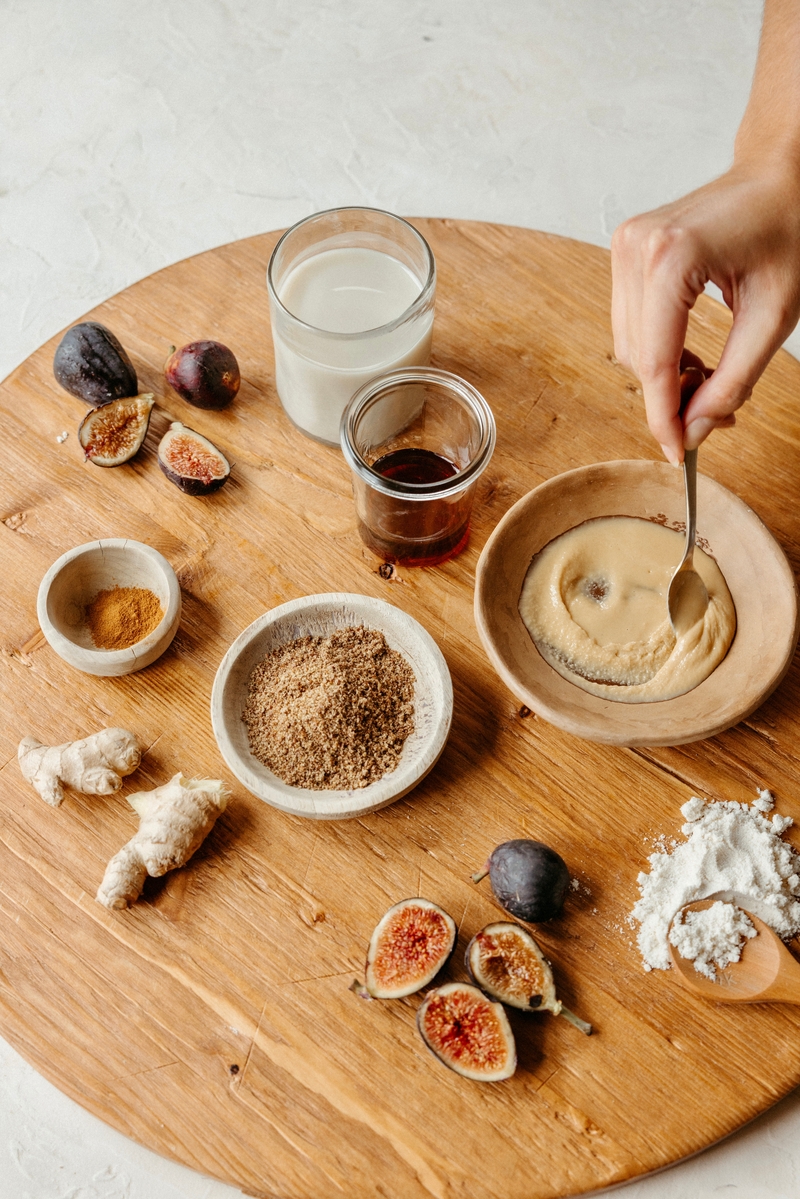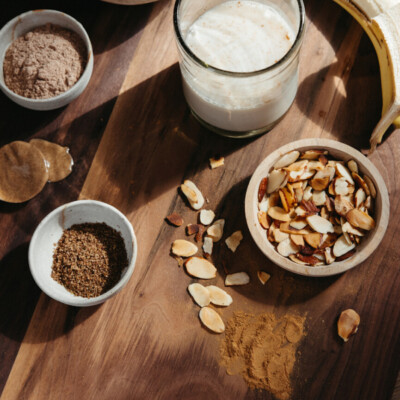I have a love-hate relationship with January. On one hand, it inspires beautiful beginnings, new intentions, and a nourished year ahead. On the other hand, it’s synonymous with forced resolutions and quick-fix diet trends. Year after year, I find myself oscillating between the two: continue relishing a cozy winter season or upheave my habits in lieu of new routines? Rather than pick, I’m flipping the script—a middle ground is calling. If embracing a feel-good relationship with food piques your interest, take a seat. This refreshing approach is all about how to manage blood sugar.
The idea here is this: there’s no need to start a stringent New Year’s diet. Instead, consider leaning into practical dietary principles that take intuitive eating into account. Once and for all, say sayonara to restriction, deprivation, and feeling anything less than deserving of a weekday croissant.

A Breath of Fresh Air, Amidst New Year Mottos
As we turn the calendar over, many of us are tempted by diet culture. But this is no surprise. It’s estimated that over 30 billion (yes, billion) marketing dollars are funneled toward weight loss foods, supplements, and programs in the new year. We’re sold the illusion that a particular diet or exercise regime will make us thin, beautiful, and above all, happy. Feel like you can’t escape weight-shaming messaging in January? You’re not alone. With that in mind, we’re here to plant a different seed—a sustainable take on nourishment. Hello, blood sugar balance.

Why I’m Not Anti-Weight Loss
Before we tap into all things blood glucose, first thing’s first: while I am anti-diet culture, I’m not anti-fat loss. Yes, I believe these two things can co-exist. Under certain circumstances, losing body fat might be an important and vital goal. Maybe, weight loss is a piece to your health puzzle. For that matter, if your body mass is negatively impacting the quality of your life, it’s worth a conversation with your healthcare provider. Ultimately, losing fat should be for the right reasons: better sleep, a stronger body, improved fertility, balanced hormones, lower risk of chronic disease, more energy, reduced joint pain, and more.
If losing weight is purely for aesthetic reasons—or to accredit body dysmorphia—weight loss will not improve your health. Believe you’re focused on weight loss for unhealthy reasons? Consider NEDA’s supportive team and resources.

There’s No Quick Fix
Spoiler alert! No three-day juice cleanse or 30-day diet is the answer your healthiest body. Can these things kickstart your wellness journey? With the right intentions, sure. But they’re bandaid solutions to a longer-term approach. Instead, prioritize finding your body’s natural set point. This is a range of 5-20 pounds where your body thrives. Within this spectrum, you’re honoring your hunger cues, moving your body routinely, getting quality sleep, and menstruating. Most importantly, you feel good. However, patience is key. It takes time to find your set point. But through trial and error—and without extreme regimes—you can find your body’s natural weight range.
Blood Sugar Balance for Long-Term Health
Speaking of a longer-term approach, let’s talk about blood sugar. Prioritizing stable blood sugar is two-fold: a holistic way to nourish your body and a sustainable strategy to include the foods you love. Think of it as a practical (and attainable!) alternative to following a strict diet. When we focus on maintaining stable blood sugar levels, we support our body’s ability to regulate energy, mood, weight, and hunger effectively! And unlike restrictive diets—that often lead to unsustainable eating patterns—prioritizing blood sugar balance fosters a balanced and inclusive relationship with food.

What is blood sugar?
For context, blood sugar (also known as blood glucose) is our main source of energy. It’s a type of sugar we get from the starchier, carb-forward foods we eat. From beets to bagels, the body uses that sugar for energy. As it travels through our bloodstream to our cells, our blood sugar levels rise. With the help of the hormone insulin, glucose travels into our cells where it can be used for fuel. And while we need adequate blood glucose levels to survive, constant sugar spikes are not the goal.
What happens when blood sugar is out of whack?
When blood sugar levels are dysregulated (i.e., from eating too much sugar or not getting enough movement), there are consequences. Short term, frequent spikes can lead to energy fluctuations, mood swings, and difficulty concentrating. But over time, prolonged exposure to these fluctuations may contribute to insulin resistance. And this increases the risk of type 2 diabetes, weight gain, cardiovascular issues, hormonal imbalances, and more.

Easy Tips to Make Blood Sugar a Breeze
When it comes to keeping your blood glucose stable, look no further than your diet and lifestyle.
Diet
Focus on building a balanced plate. That means including all three macronutrients—protein, complex carbohydrates, and healthy fats. And when possible, pack in fiber-rich ingredients—leafy greens, non-starchy veggies (mushrooms, tomatoes, eggplant, etc.), and seeds. Counter to diet culture, you also need to eat enough. After all, eating less than your caloric needs increases the production of cortisol (our stress hormone). And chronically elevated cortisol causes blood sugar imbalance.
Lifestyle
Managing your glucose means getting quality sleep, minimizing stress, and moving your body. Exercise is important for many reasons, but it’s crucial for helping control blood sugar spikes. Movement encourages insulin sensitivity (a good thing!). When you exercise, your muscles absorb sugar from what you eat, naturally lowering blood sugar levels. Good news: no need for intense exercise. In fact, moderate-intensity exercise—like strength training and walking—significantly reduces blood sugar spikes.

Make Protein a Priority
Along with healthy fats, protein is crucial for blood sugar balance. It slows the absorption of glucose, preventing rapid spikes and crashes. Additionally, a protein-rich diet enhances satiation, helping you stay fuller for longer, and it supports body composition goals (preserving and building lean muscle mass). When in doubt, pair your go-to carbs—oats, pasta, rice, potatoes, bread, cookies, etc.—with protein (like Greek yogurt, eggs, almonds, cottage cheese, tofu, poultry, fish, and protein powder).
Swap Ultra-Processed Foods for Whole Foods
To take this one step further, make colorful foods a priority in 2024. Eat the rainbow! Not only does this support stable blood sugar, but it’s a beautiful way to increase your antioxidants and fiber. When possible, stick to the perimeter of the grocery. Typically, that’s where you’ll find fresh produce, lean proteins, and dairy—nutrient-dense, whole foods. The inner aisles often house ultra-processed and packaged items, which are higher in added sugars, preservatives, and refined carbs (all of which make blood sugar management more difficult!).

No Need to Give Up the Foods You Love
At some point, we’ve been told that foods like white potatoes and high-sugar fruits will make us overweight, infertile, and sick. Sigh. Unless you have a medical or ethical reason for eliminating certain ingredients, there’s no need to give up foods you love! While there are nutrient-dense options for certain ingredients and recipes, that doesn’t mean you always have to choose them. Your journey to health isn’t a sprint—it’s a lifestyle. Above all else, make 2024 the year you truly connect with your plate in a vibrant, happy, and balanced way.






